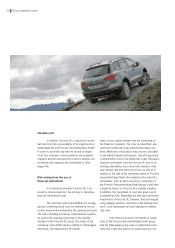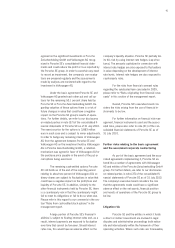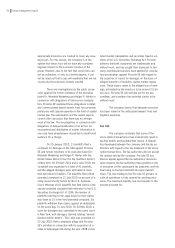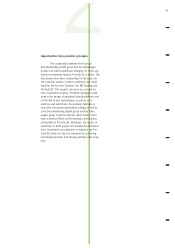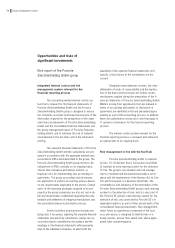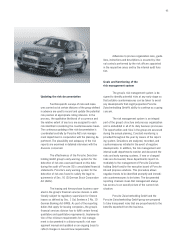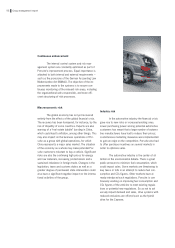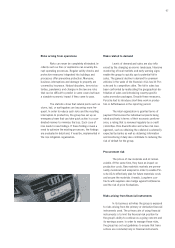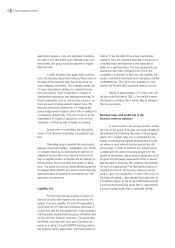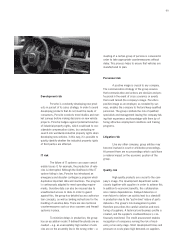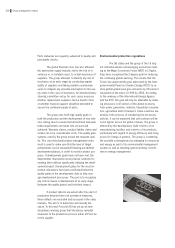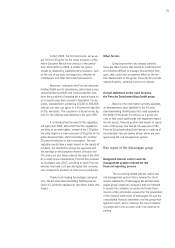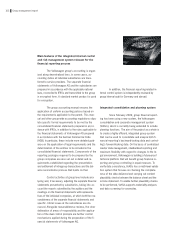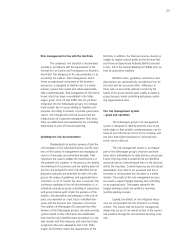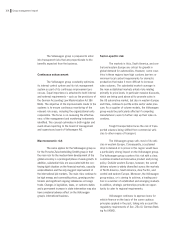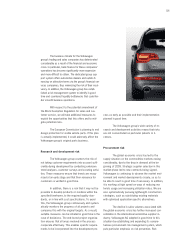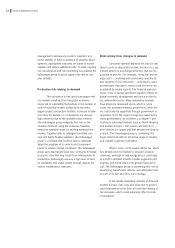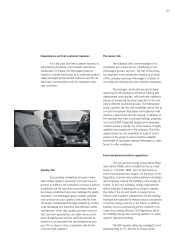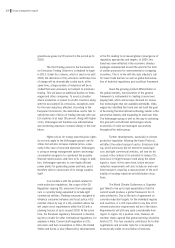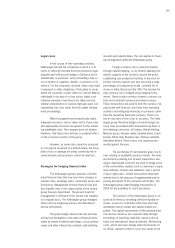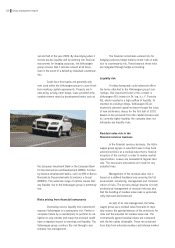Porsche 2009 Annual Report Download - page 100
Download and view the complete annual report
Please find page 100 of the 2009 Porsche annual report below. You can navigate through the pages in the report by either clicking on the pages listed below, or by using the keyword search tool below to find specific information within the annual report.
Parts deliveries are regularly subjected to quality and
punctuality checks.
The global financial crisis has also affected
the automotive supply industry, led to the risk of in-
solvency or, in isolated cases, to actual insolvency of
suppliers. The group attempts to identify any risk of
insolvency at an early stage by conducting regular
audits of suppliers and taking suitable countermea-
sures to mitigate any possible interruption to the sup-
ply chain in the case of insolvency. An interdisciplinary
steering committee set up for such cases assesses
whether replacement suppliers can be found in time
or whether financial support should be extended to
secure the continued supply of parts.
The group sets itself high quality goals in
both the production and the development of new vehi-
cles, taking care to ensure that all technical and quali-
tative requirements are taken into account and
achieved. Warranty claims, product liability claims and
recalls can incur considerable costs. The quality gate
systems used by the group ensure the requisite qual-
ity. This cross-functional project management instru-
ment is used to make sure that the level of target
achievement can be measured following pre-defined
development phases, in order to monitor project pro-
gress. If development goals have not been met, the
departments responsible must propose solutions for
meeting them without significantly delaying the devel-
opment project. Development gates for the most im-
portant milestones have been positioned below the
quality gates in the development chain to help man-
age development processes. The goal is to recognize
any critical issues in development at an early stage
(between the quality gates) and limit their impact.
If product defects are extant after the start of
production despite these risk avoidance measures,
these defects are recorded and assessed in the sales
markets. The aim is to determine and remedy the
cause. To this end, Porsche AG has set up an inter-
disciplinary working group that introduces remedial
measures to the production process either at Porsche
or the supplier.
Environmental protection regulations
The G8 states and the group of the 16 larg-
est industrial nations and emerging economies meet-
ing at the Major Economies Forum (MEF) in L’Aquila,
Italy, have recognized the 2-degree goal for reducing
the continuing global warming. This means that the
Forum has approved the goal advocated by the Inter-
governmental Panel on Climate Change (IPCC) to re-
duce global greenhouse gas emissions by 50 percent
measured on the value of 1990 by 2050. According
to the analyses of the International Energy Agency
and the IPCC this goal will only be attainable by reduc-
ing emissions in all sectors of the global economy,
from power generation, industry, household consump-
tion, agriculture and to transport. Some countries are
already in the process of introducing the necessary
policies. It can be expected that such policies will be-
come tighter across the globe in future. The group is
affected by this development, both in terms of its
manufacturing facilities and in terms of its products,
particularly with regard to energy efficiency and rising
prices for energy in general. The group is countering
the possible consequences by managing its resources
and energy as part of its environmental management
system as well as devoting special working commit-
tees to energy management.
100 Group management report


